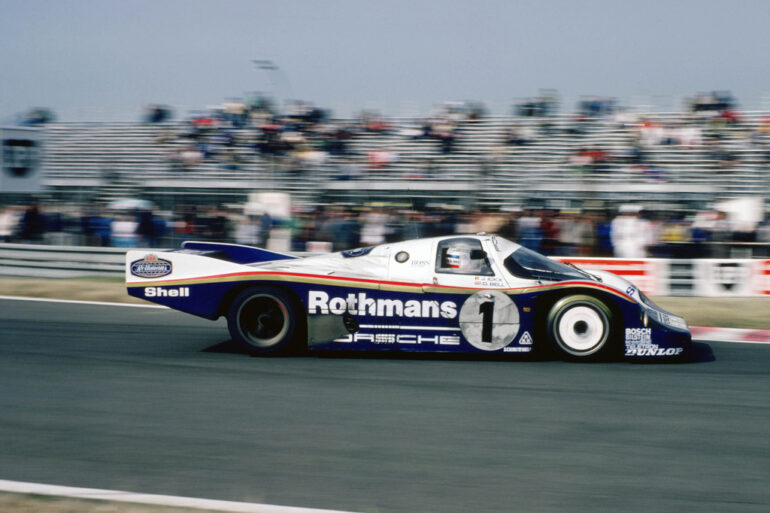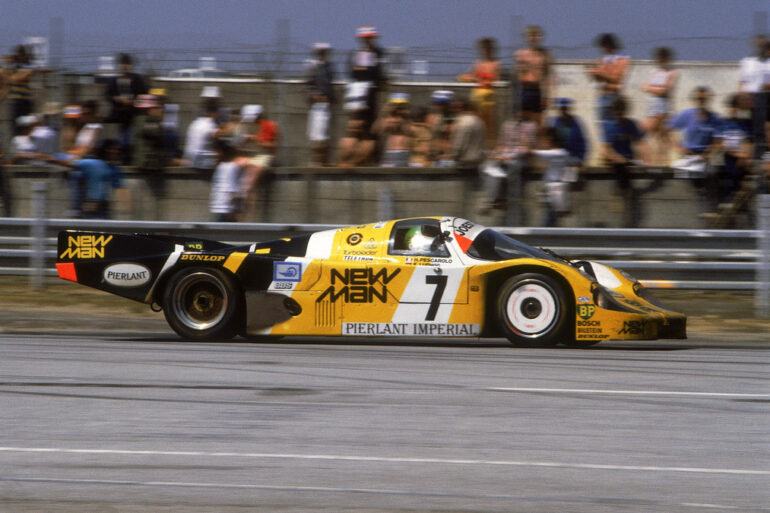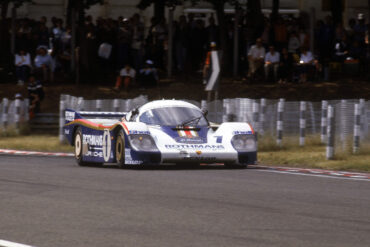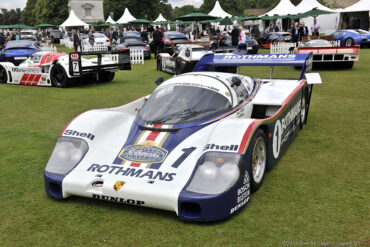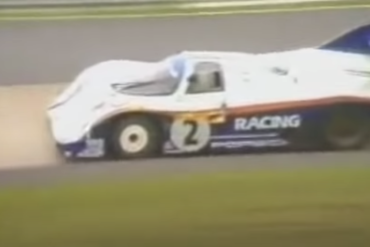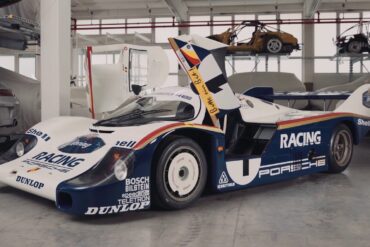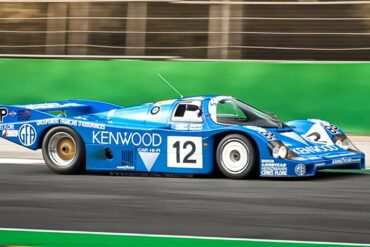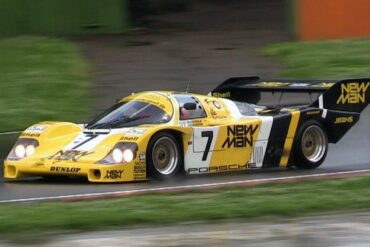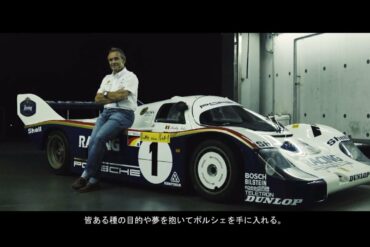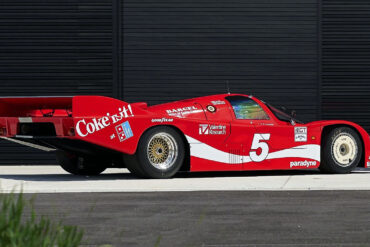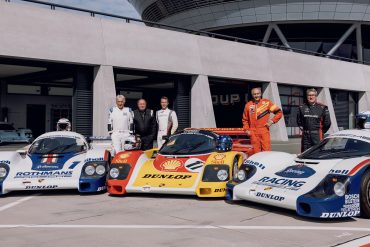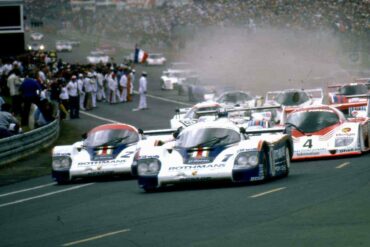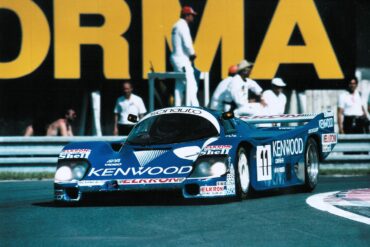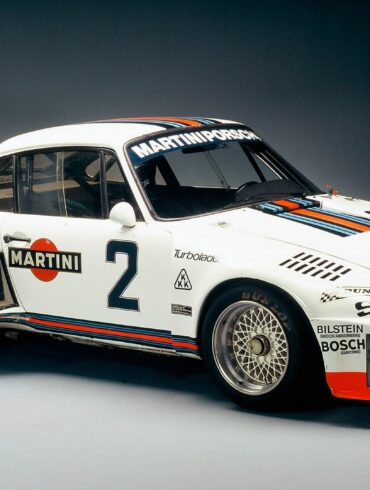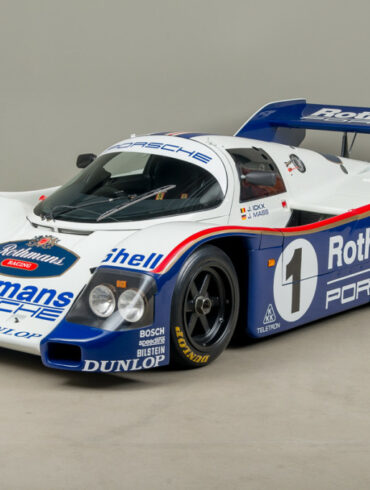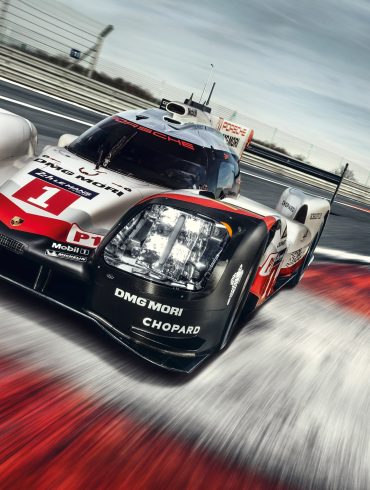The Porsche 956 was a Group C sports-prototype racing car designed by Norbert Singer and built by Porsche in 1982 for the FIA World Sportscar Championship. It was later upgraded to the 956B in 1984. In 1983, driven by Stefan Bellof, this car established a record that would stand for 35 years, lapping the famed 20.832 km (12.93 mi) Nürburgring Nordschleife in 6:11.13 during qualifying for the 1000 km Sports Car race.
Porsche 956
The Ultimate Model Guide
Few race cars are as universally acclaimed as the Porsche 956. The car is a brilliantly engineered aesthetic wonder, born of another round of FISA changes that ultimately resulted in the emergence of several marque innovations. Before the debut of the Porsche 956, there were the 935 and 936 prototypes which dominated international sports car racing throughout the late 1970s. Successful as they were, these cars shared a lot of parts with the older prototypes from the 1960s. Porsche (as of 1981) had not developed an all new prototype racer for almost two decades. Come 1982, and Porsche went all-in for the 956. Built for Group C sports-prototype racing and designed by Norbert Singer, the goal was for it to start completing in 1982 for the FIA World Sportscar Championship. The 956 was the first Porsche race car to feature monocoque construction, as well as the first to feature so-called ground effects; the aerodynamic channeling body features that maximize cornering force. The engine was the same as the one used in the Porsche 936, the Type-935 2.65 L twin-turbo Flat-6. Hugely successful from the start, it took a 1-2-3 finish at the 1982 24 Hours of Le Mans in just its second race and would go on to dominate the next few seasons, winning Le Mans again in 1983, 1984 and 1985.
Porsche 956 Basics
Manufacturer: Porsche / Production Years: 1982 - 1986 / Designer: Norbet Singer / Chassis: Aluminum monocoque / Layout: Rear mid-engine, rear-wheel-drive layout / Engines: 2.65 L Porsche Type-935 Twin-Turbo Flat-6 / Transmission: 5-speed manual or dual clutch semi-automatic / Premiere: 1982 May 15 at Silverstone / Achievements: Le Mans winner 1982 - 1983 - 1984 - 1985 / Predecessor: Porsche 936 / Successor: Porsche 962
A New Prototype Class
In August 1981, the FIA announced the introduction of a new sports car prototype class into the World Sportscar Championships beginning with the 1982 season. World championships were held for these “Group C” vehicles for a decade. The new regulations were mainly focused on fuel consumption so there was a lot of room for manufacturers to innovate and push limits.
The Porsche 956 was built by Porsche in 1982 to participate in the World Sport-Prototype Championship in this new Group C category. The Porsche 956 was a radical revolution compared to the previous Porsche 936 that won several competitions between 1976 and 1981. Several technical innovations such as advanced aerodynamic solutions and the aluminium monocoque chassis were all cutting edge.
A Technical Marvel
The 956 project started in the Summer of 1981 and the first prototype chassis was completed in Spring 1982. Porsche decided to use a flat-6, the same one that powered the 936 to victory at Le Mans. It was the Type-935 2.65 L turbocharged Flat-6 engine good for around 620 horsepower and included a new progressive injection system. Engineers also began using the Porsche Doppelkupplung (PDK) for the first time in the 956. Another new addition is the development of the five-speed gearbox.
For the first time, Porsche formed a monocoque which was a departure from the previous tube chassis designs. The 956 used a sheet aluminum tub surrounded by a load bearing composite body. This construction method formed Porsche's most rigid chassis, and would meet the safety requirements byu the FIA which stated that the gas tank had to be surrounded by a rigid crash structure. It helped the car to meet the 800 kg weight minimum.
Porsche focused on building a race car that had supreme aerodynamics, including advanced ground effects. To balance the downforce created ground effects, a venturi in between the front wheels complemented the large downforce created by the rear wing and much larger rear venturi. The 956produced over three times as much downforce as the famous Porsche 917 and meant the 956 could reach record-breaking cornering speeds on the fastest racetracks while also allowing it to hit 218 mph+ top speeds on long straights.
That top speed and cornering depended on which wing was on a car since the Porsche 956 had two different rear wing designs. For most events, the cars were fitted with a larger, high downforce rear wing. For the Circuit de la Sarthe, where a top speed on the almost Mulsanne Straight was essential, the car was fitted with a much lower and smaller ‘low drag’ wing.
During its lifetime, the Porsche 956 underwent some changes, such as an improved chassis with better fuel efficiency for the 1984 season.That car was named 956B. In total, Porsche built 28 cars from 1982 to 1984.
The 956’s Racing Success
The Porsche 956 was dominant from day one. Porsche not only won all of the FIA World Sportscar Championship titles between 1982 and 1984, it collected both the drivers’ and manufacturers’ championships on each occasion. In addition, Stefan Bellof drove a 956 (chassis no. 007) around the Nordschleife of the Nürburgring in a record-breaking time of 6 minutes 11.13 seconds, which remained a record for 35 years.
The Porsche 956 made its competitive debut at the 6 hours of Silverstone in May 1982, the second round of the World Endurance Championship, where they finished second. After missing the following round at the Nürburgring to allow further development of a car, Porsche went after the 24 Hours of Le Mans in June. It was a 1-2-3 victory for Porsche. That year Porsche secured both drivers’ title for Jacky Ickx and manufacturers’ title for Porsche. In 1983, Porsche 956 was a winning car in all seven races of the World Endurance Championship.
Since the Porsche 956 was a totally dominant car in the championship, the same situation happened at 1983 Le Mans 24-hour race. Porsche drivers occupied not only all podium spots but at the same time, Porsche 956 took the first eight places. In 1984, Porsche’s domination continued, with 10 wins in 11 races.
At the 1984 24 hours of Le Mans, Rothmans Porsche team boycotted the race due to a disagreement between Porsche and the Automobile Club de l’Ouest (ACO) over the fuel regulations. Despite that, Porsche 956 clinched seven top positions with private teams. In 1985, Porsche was combining 956B and 962C cars, taking one more world’s title. Porsche won eight out of ten races. The season of 1986 was the last competitive year for this legendary car. The era of Porsche 962 already began and Porsche continued its domination in the world’s prototype racing.
When talking about the Porsche 956s racing success it is important to mention the privateer impact. After the 956s dominated the 1982 and 1983 seasons, it was offered to private teams. As Porsche was the only company selling prototype race cars, they were the car to buy and teams such as Joest, Kremer, John Fitzpatrick, Richard Lloyd, Brum Motorsports and Nova Engineering did just that. They added to the 956s success and in many cases developed the 956 further and won a lot of races.
Porsche 956 Guide
To correspond with Group C racing first introduced by the FIA, Porsche launched the 956 as its top race car. In 1983 FIA had announced a new rule for the coming 1984 season – maximum allowed average fuel consumption of 51 L/100 km instead of earlier 60 L/100 km. As a result Porsche upgraded the 956, creating the 956 B with Bosch electronic fuel injection.
Notable Porsche 956 Cars & Chassis #s
There were ten 956 'Works Rothmans' factory chassis numbers. The factory still owns chassis #002. Both chassis #004 and #010 were used as crash test mules. Chassis #005 was broken up for spares, while #00' was a wind tunnel and development car that never raced. Chassis #007 was crashed at the Nurburgring in 1983 and now restored. Chassis #003 won Le Mans in 1983. Chassis #009 is the 1984 championship winning car. There we also many Porsche 956 Customer cars with over a dozen being built in total. Numbers start at 956-101 and this comprised of the Fitzpatrick, Kremer, Lloyd and Joest teams, plus a car for the German Obermaeir team. Of a total batch of 8 examples initially constructed, chassis #101 went to Kremer, #102 to Fitzpatrick, #103 to the American Preston Henn team - to go on to race in Japan. Chassis #104 and #105 went to the Joest team, Chassis #106 to Richard Lloyd, chassis #107 was kept by the works as a test bed for their TAG formula 1 engine. Chassis #108 went directly to the TRUST team to race purely in Japan and chassis #9 went to Obermaier. Fitzpatrick ordered a second car to compete at Le Mans that year, team Brun joined 956 owners in July and the final car went straight in to the Japan based Matsuda collection.
Porsche 956 Pictures, Galleries & Wallpapers
The Porsche 956 is all about technology and performance but at the same time it is still one sexy looking race car. Enjoy the design and all the little details in these Porsche 956 picture galleries.
Porsche 956 News & Updates
Recent auctions, awesome review videos and all the latest news and posts regarding anything to do with the Porsche 956.
Join Our Porsche Community
Sign up for our weekly Porsche newsletter. The latest Porsche news, rumors, reviews and more delivered to your inbox. Cool Porsche stuff perfect for the flat-six obsessed.


